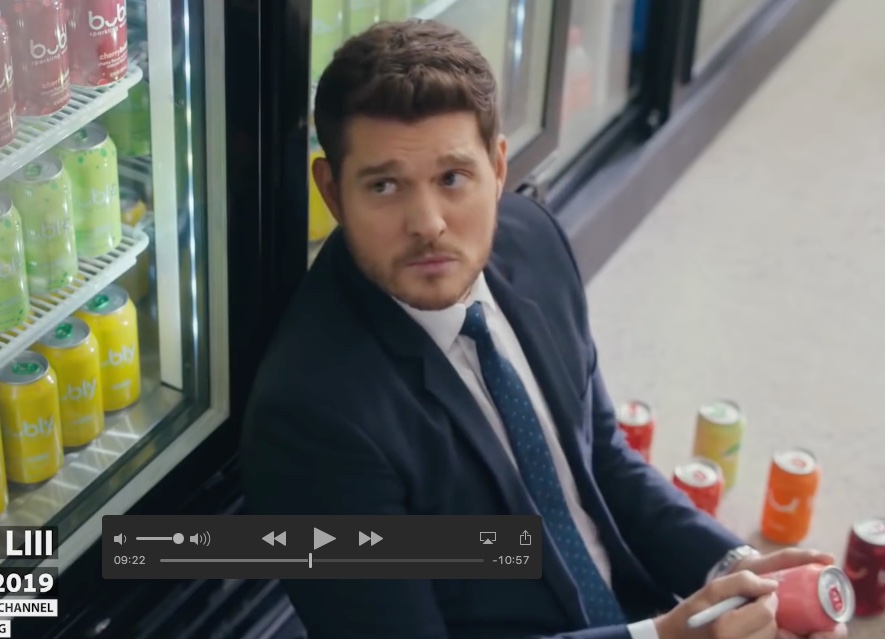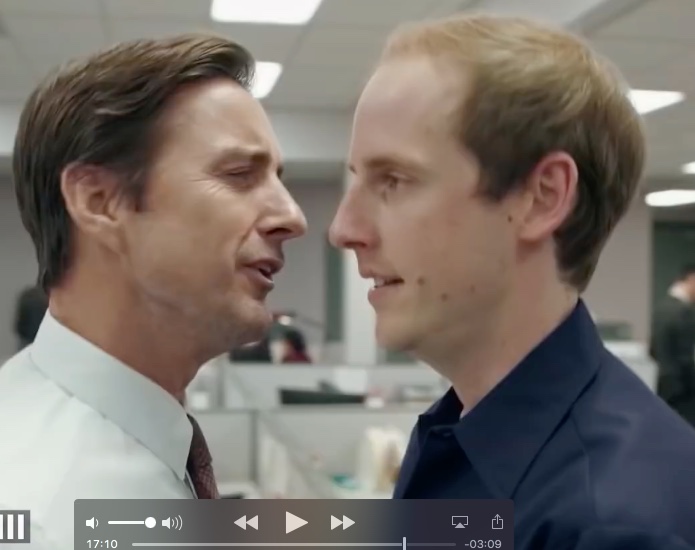What Causes Great Brands to Fade Away?
KEN BANKS’ BLOG JUNE 2019
PRESS PLAY>>TO VIEW THIS MONTH’S WELCOME VIDEO
WHAT CAUSES GREAT BRANDS TO FADE AWAY?
Our recent trip to Glacier National Park in Montana was one of the most spectacular of our journey’s over the past several years to national parks around the country and the world. Most significant memory, however, is the comparative photos that have been taken of the glaciers over the past several years and how fast and how significant these mammoth ice flows are disappearing. Some say it’s simply a matter of nature taking its course. However, the surge in ice melt is more likely the cause of global warming and the use of fossil fuels that have contaminated and increased the temperature of the atmosphere. I couldn’t help but think of this as an analogy for the way many great brands are disappearing from the marketplace at an ever-increasing rate and that this not simple an evolution of business cycles. Rather, like our disregard for the air we breath has had an adverse effect, the disregard for building brands that last and adjust to the changes in customer preferences has had a significant effect on the disappearances of some great names in marketing that (like the glaciers) we thought would be on our shopping horizon for years to come.

We’ve talked about great brands like Toys r Us, Sports Authority, Payless Shoes, Abercrombie, Banana Republic, Gap recently in these articles, and we’ve also seen the same retreat not in aerial photos but in sales and market share reports for brands like Sears, Penney’s, numerous banking organizations, insurance companies, Circuit City, Pontiac, Oldsmobile, Mercury, and the list goes on. All of those now empty storefronts and brands, in my opinion, could have survived successfully if the senior management, especially marketers, had developed an ongoing brand strategy that evolved to meet the customer trends and attitudes. Great brands like Amazon, Costco, Walmart, Geico, Lexus/Toyota have recognized that to succeed in today’s market, a company has to adjust and consistently innovate with a premise that appeals not only to the mind of the consumer but also the heart. That’s where the relationship begins and, I believe, if many of our industrialists in the past had experienced the beauty and specter of our national parks and, particularly, glaciers. They would have had a plan to protect the brand that is our natural environment.
I was talking with our postman a few days ago, as he sat in his over-heating mail truck. He was complaining about how inefficient these trucks were and how Amazon was changing the world of retail delivery. At the same time, I viewed a feature on a news report about the growth of electric vehicles in China and that inexpensive electric vehicles are here, now and being mass produced as fast as the infrastructure could keep up with it. I thought about how efficient mail delivery with electric vehicles that could be charged every night. How the streets of New York (and Chicago or Vegas) could be less polluted if all those taxis and buses were electric instead of gas. These are major improvements that can be made now that not only benefit our environment, but also improve the brands of the postal and transportation services to help build those businesses. Great branding can save a company with a reason for being by adjusting its benefits and messages to more people and creating demand. It takes a vision and a conscious effort to create the value and a relationship that endures.
ACTIVATE THE BRAIN…STIMULATE YOUR BRAND!
KEN BANKS’ BLOG MAY 2019
PRESS PLAY>>TO VIEW THIS MONTH’S WELCOME VIDEO
ACTIVATE THE BRAIN…STIMULATE YOUR BRAND!
Nine years ago, I got together with another consultant/speaker to co-author Brain Branding—Activate the Brain…Stimulate Your Brand which is now available on Amazon and Kindle. I had been consulting and presenting on developing an effective brand for several years, but when I heard Robyn’s presentation on communication and whole brain thinking, I believe together we had discovered an innovative way to make branding come alive for marketers in almost every consumer industry. Robyn had been enlightening her audiences on the fact that the brain is actually divided in four quadrants—not just two halves. As I listened to her, it became apparent that the differences in these four quadrants mirrored four of the five steps that I had learned were necessary in creating a successful brand strategy. So, we put our “brains” together and develop BrainBranding. It was a new way to look at how to understand customers better by studying the way these customers think when they decide to shop a certain store, buy a specific brand, or use a special service.

We have been promoting our book and presenting ever since by helping marketers understand that there are four thinking styles:
The Investigator (Quadrant A)- This customer researches extensively before making decision. And it’s not just price, the investigator wants to know product features, reviews, warranties, service and history.
The Coordinator (Quadrant B)- Reliability and dependability are important to this customer. Requiring simplicity and practicality, she wants a clear definition of the features and looks for solutions to the need or problem that nurtured the interest. The coordinator wants details and facts.
The Relater (Quadrant
C)- A relationship is important to this customer and they will seek out a
seller who is personable and genuinely interested in them and their needs.
An emotional connection is critical and once you have it the brand loyalty is
difficult to lose. Want benefits and will share them with others and is
motivated by a positive purchase experience.
The Trendsetter ((Quadrant D)- This customer wants the latest and the newest technology or style. Anticipates “out of box” thinking and innovative features and benefits. An early adapter who prefers multiple options for brand usage.
The interesting fact is that research has shown that over 90% of the people in the market are motivated by all of these styles to some degree. So, you can’t just brand to one style, you have to have-e a brand message that hits all four to some extent and to do that the marketer has to exercise these same styles in a four-step brand development strategy and they aren’t in the same order as presented above.
- CREATE YOUR VISION—(Trendsetter)Look to the future. Why does your brand exist? What does your future vision look like and how will the market change. Look for state of the art options and unique benefits. Be creative in your message. Stand out. Have a strategy based on the future as well as research of past competitors and brands.
- CONDUCT RESEARCH (Investigator)—Get the facts about your brand and what it’s all about. Look at market history and competitive brands. Look at brand history and sustainability. Dive into the statistics that support your brand’s position and analyze the competition for strengths and weaknesses. Determine the brand’s position and its value proposition. This is the TRUTH of the brand.
- COMMUNICATE AN EMOTIONAL VALUE (Relater)- Unfortunately, many marketers jump into a new ad campaign or theme before doing the necessary homework above. Once you’ve done the homework, you can start communicating the feelings that you want the customer to have toward your brand and how they feel toward you as seller. Communicate the benefits of using your brand or service. Let them know What’s In It For Them! Develop the HEART of the brand—how it makes them feel inside and what personal service it provides.
- CONSTRUCT A PLAN (Coordinator)- Add some form to your substance with a plan that is comprehensive and executable (and understandable). Combine the 3 steps above into a marketing plan and develop a reasonable timetable and measurement for success. Honestly determine the state of the brand today and where you want it to be in the future (and how to get there.)
That leaves us at the Step Number 5, which we have added because without it all of the others are just an exercise in futility or at best mediocre results. That is to LIVE UP TO THE BRAND EVERY DAY! In order to do this, you must market your brand to your staff and those who represent you in every aspect of the business. This is just as detailed as the plan in Step 4 above. It is not just a video or memo that briefly explains the new brand position, it is a marketing strategy developed by and for everyone who has a stake hold in the product or service. If the server or salesperson doesn’t get it and demonstrate it with every transaction, the customer won’t return. If the service department or product development don’t create what is promised in the marketing, they won’t buy it. If the message isn’t consistent with your brand strategy and have appeal to all of the thinking styles noted above, forget about success.
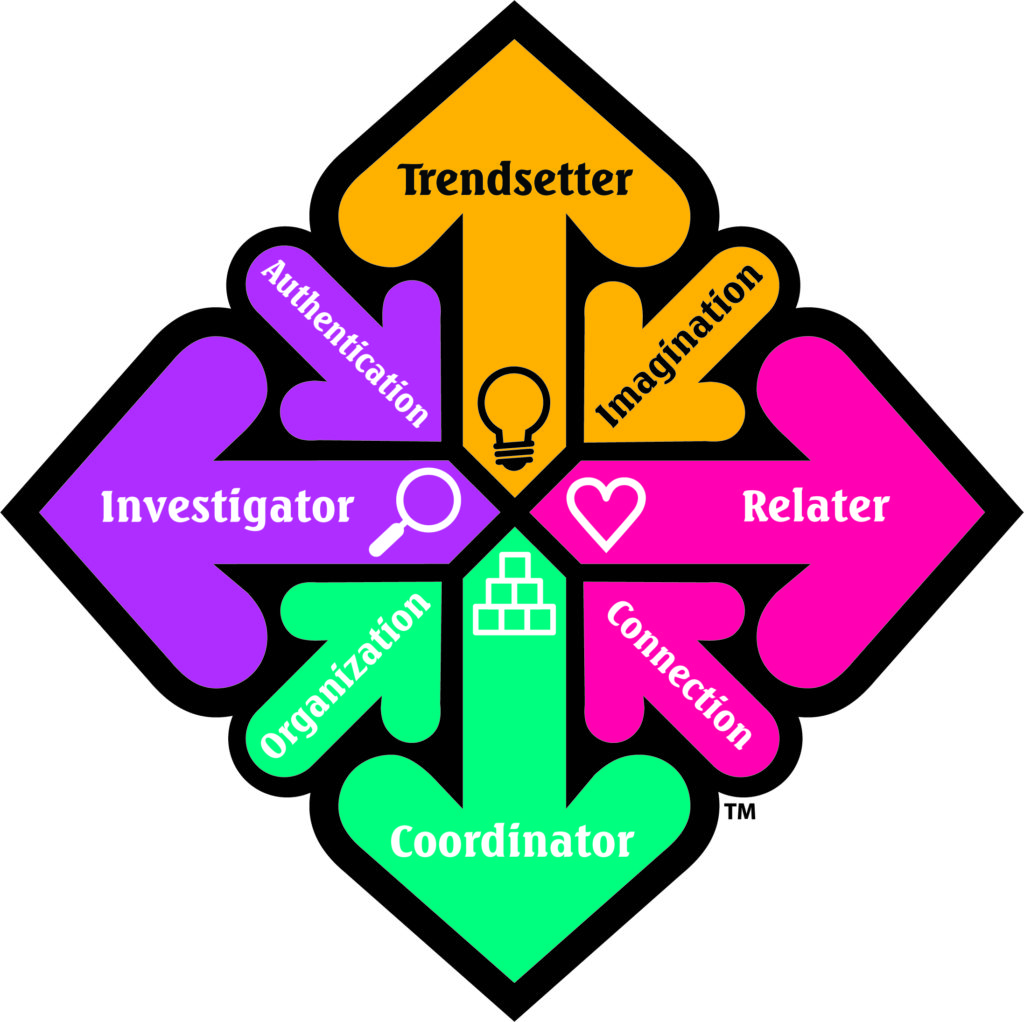
All of this is discussed in more detail and with specific case studies and example in our book. We also developed a manual that walks you through the process of developing a successful brand. Good luck and Stimulate Your Brand!
DON’T PAY LESS FOR BRANDING!
KEN BANKS’ BLOG APRIL 2019
PRESS PLAY>>TO VIEW THIS MONTH’S WELCOME VIDEO
DON’T PAY LESS FOR BRANDING!
By this time next month, the last of the former 4400 Payless Shoe Source stores will be shuttered and another retail brand will disappear from the marketplace…and no one will notice. Since the company announced its closing a couple month’s ago, I’ve been asked a few times for my opinion on why this once aggressive retail chain that had remodeled and re-positioned most of its stores not long ago, failed.

Of course, my simple answer is BRANDING…or the lack thereof. Having worked in the discount shoe industry for the agency handling the Pic n’ Pay Shoes chain, based in Charlotte several years ago. There certainly seemed to be a lot of opportunity for success for a chain like Payless. A closer look, however, showed that it was a tough challenge despite the growth of athletic and casual shoes and rapid changes in fashion shoe styles in the past several years. The problem with a brand like Payless was that the name said it all. It was a brand based on low prices and not much else in the customers’ minds. As I’ve said many times, low prices only get you in the retail ballpark and it’s all the other things that you need to do to form a customer relationship that builds a brand that resonates and makes a difference when someone chooses a store or service. With the intense competition from the discount chains, off-price designers shoe stores, and off-price stores like Kohl’s TJ Maxx, SteinMart, etc., just having your own brand of low-priced shoes wasn’t enough to keep a loyal customer. Add to that the warehouse clubs that feature name brand shoes consistently at least half off the regular retail. Don’t forget the outlet malls that always have a number of shoe outlets and it’s more than a challenge.

I recall a campaign that we did for Pic n’ Pay for their line of athletic shoes. The message was yes, this is a good price but when you compare the features and construction to the same shoe from Nike in a more convenient location, you had a brand statement that made a difference. Pic n’ Pay has long faded from the scene due to being acquired and merged into other brands.
However, Skechers has developed its brand of casual shoes with a brand statement that focuses on comfort and style and lets the retailer do the price promotion. I’ve noted that they have now opened over 3000 free-standing outlet stores and they’ve successfully created a brand selling over 170 million pairs a year and generated over $4.5 Billion in sales. It’s a brand based on comfort, but it has aggressively established itself as a strong citizen of the communities they serve and a sustainability program as well. Then, they market their shoes with effective creative that focuses on the comfort benefit, even if you have big feet like Howie Long. Click on this link to view one of the spots: https://youtu.be/CGhUEYvz8zI
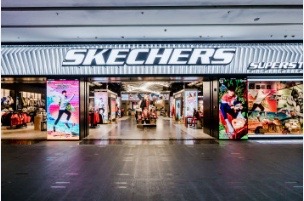
Payless, to me, never seemed to have any other message than price. Its stores were updated but not exciting and their free-standing locations helped build a convenience attribute but they just seemed to be just another retail location with little consumer appeal. Additionally, their marketing never seemed to provide any other reason to buy your shoes there regularly. Price only gets you on the playing field, a relationship builds a successful brand.
That’s what branding is all about. Building a relationship and then providing a reason for being that resonates with your target customer. Unless, a store invests in the product, the outlet, and the experience to differentiate it from increased competition (both in stores and online), it hasn’t much chance. Then, if you can’t make the investment to create a marketing message that reaches your target customer, the store is doomed to become another of the several empty stores dotting our marketplace…and a brand we’ll soon forget
SUPER BRANDING FROM A NOT SO SUPER GAME!
KEN BANKS’ BLOG FEBRUARY 2019
PRESS PLAY>>TO VIEW THIS MONTH’S WELCOME VIDEO
SUPER BRANDING FROM A NOT SO SUPER GAME!
So another Super Bowl has come and gone. The game surely wasn’t memorable this year—although some day we will all remember the Brady/Belichick Dynasty and this game will come to mind even if we forget who they played. The hype for this sporting event has gone beyond overdone unless of course your favorite team happens to be playing. The media coverage, the media day, the radio row, the pregame shows, the halftime show (yawn), the postgame show, the highlights if any are getting to the point of boredom. So what branding got to do with it?
Well, there is no other media event on which more marketing dollars are spent and more advertising hype is displayed than the Super Bowl (whoops, I meant the Big Game since I don’t have NFL license). Let’s face it if you’re going to spend $5.25 million for a 30-second spot (that $175,000 a second) not to mention the production and talent costs, you certainly do get a lot of media attention beyond the airing of the spot itself. So, it’s a bif spend and it’s a big opportunity to strengthen your brand message like no other ad you might run the rest of the year.
I have to admit, I do not sit and scrutinize every ad that runs before, during and after the game, but I do watch the game and am sensitive to the messages just as I am when I watch Bull, SportsCenter, or This is Us. I do this to see if any cause a “wow” reaction or whether they go unnoticed or elicit a “What was that all about?” reaction. Again this year, I am impressed by the production dollars spent on these spots more than the message. However some do break through and at the same time, in my opinion, establish or further strengthen the brand message for the particular product or service. So here are my top five spots that caught my branding eye this year. These are commercials that are memorable not only for creativity but also for communicating the brand message effectively. I’ve added a link to a recap of all the commercials so that you can review them al without being disturbed by a game or Adam Levine’s tattoos. I’ve also noted a couple that I think wasted their money and our time with no branding message that I can determine.
Click here to review all the spots without interruption:
THE GOOD ONES
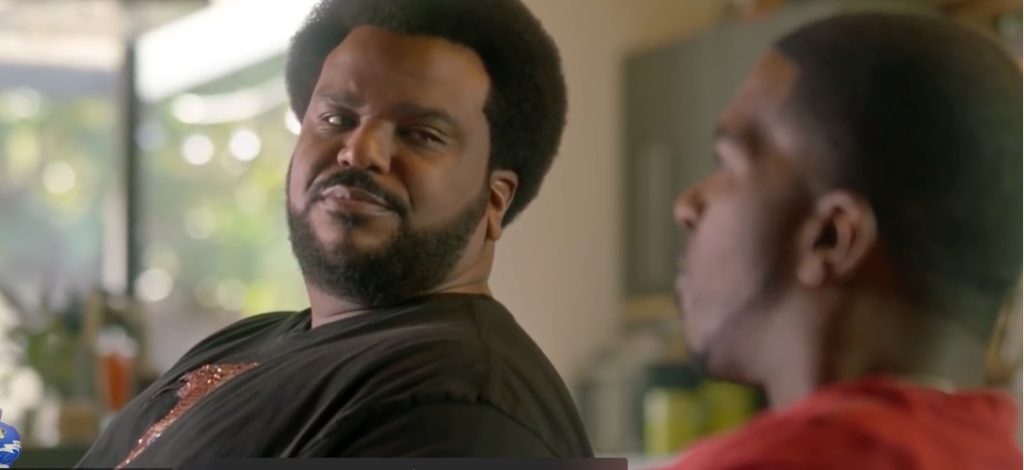
- Dietz Nuts: Ok, this is a pretty simply produced spot with Craig Robinson (formerly on The Office) and his brother and it’s about a new nut. However, I think since it’s a spot to introduce a new kind of nut—made out of meat not a vegetable (or is it a fruit?). Anyway, this spot gathers your attention with a likable celebrity and a simple message that catches your attention while you much on that bowl of beer nuts on the bar. Humor that is realistic and a simple message and it caught my attention to find out more about this new nut. And, while were being nutty, I thought the spots by Planters (the #1 brand) were silly and the use of Charlie Sheen and A-Rod was superfluous.
- Bubly. A great way to introduce another new brand, Bubly sparkling water features the guy whose name we all mispronounce, Michael Buble’ and his efforts to change the spelling to his name even in the store. A simple name that helps define the brand and differentiate it from the hundreds of other carbonated drinks on the market.
- Colgate Toothpaste. Never thought a classic packaged goods brand like this would do a super bowl spot that really is on target. Featuring Luke Wilson, a recognizable actor without any baggage to disrupt the brand message, the message hits on the best benefit of using Colgate Total SF—that it leave your breath fresh especially for those up close conversations. I think it was engaging, funny, and realistic while positioning a new version of a well-known brand that we use everyday.
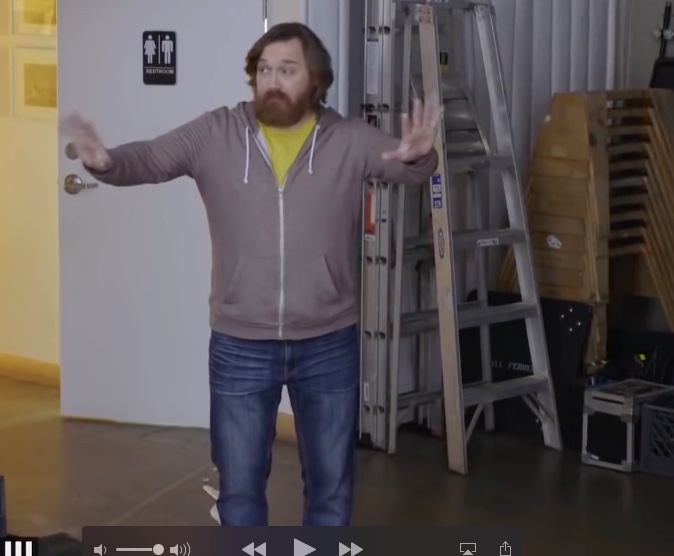
- Fabreze. Similar story here but not a new product. Just a new way of hitting on one of the biggest uses of an air freshener but with a timely situation at a Super Bowl party. No need for TO in this spot, but the scenario is funny and drives home a new message for an every day product.
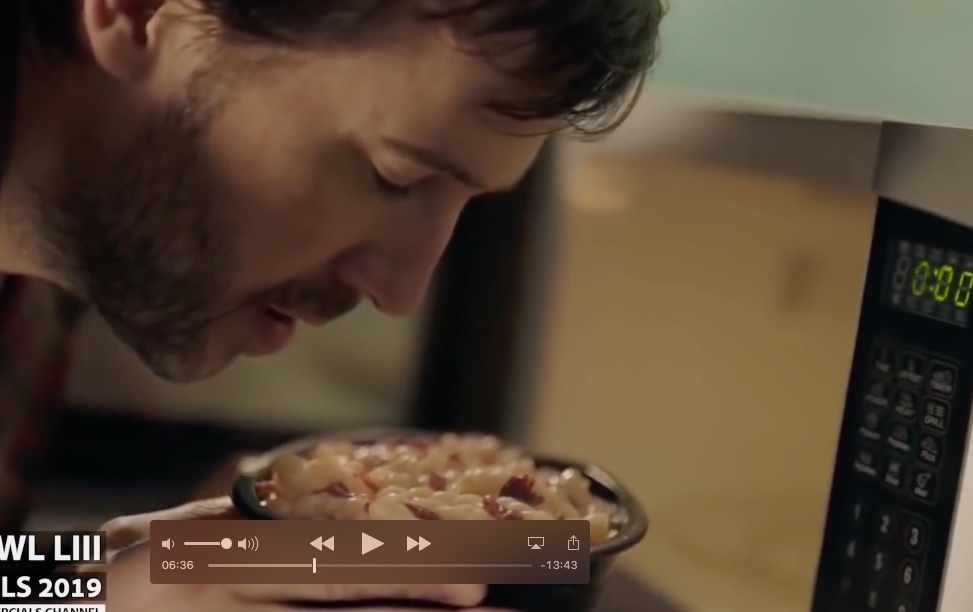
- Devour Frozen Entrees. Another new product to me that I won’t forget easily. A different approach to positioning the brand from all the other frozen dishes out there and getting the message across that will turn you into a fanatic (frozenfood-ofile?). The scenarios are recognizable when someone is addicted but doesn’t want anyone to know and the brand name is interesting enough to spark some interest into an otherwise mundane product category.
There are several others, but I chose these for originality, simple production, and getting the branding message across.
NOT SO GOOD ONES.
On the other hand, here are some who I feel wasted their $5.25 Million plus :
Audi—Dreaming about a car during a near death experience caused by a cashew.
Nuts to you.
Olay: Killer skin. Is this a trailer for a horror film or a poor way to sell soft, supple
Skin. I don’t think it’s a good partnership anyway.
Pepsi. I love Steve Carell, but I didn’t find these spots funny or effective.
Amazon: I love Amazon, but these celebrity spots (Harrison Ford) don’t work for
me at all.
Bud Light: Usually I find Bud commercials to be some of the best, but this one about
the jousters in its ongoing medieval campaign is really stupid even if it is movie trailer in disguise. Dilly. Dilly
Turkish Airlines: Nice story and more of a short flick. Not sure it would make me want to fly.
Well, there are a lot a lot more but let’ s get on to March Madness and hopefully some more effective branding this year.
HOLIDAY BRANDING REALLY WORKS!
PRESS PLAY>>TO VIEW THIS MONTH’S WELCOME VIDEO
HOLIDAY BRANDING REALLY WORKS!
Spending the Thanksgiving holiday with our family in the North Georgia Mountain reminds me of how important relationships are at this time of the year. Watching some of the multitude of holiday advertsing on the air and online, also reminds me of how so many products, services and store forget that it’s the relationship that they have with their customer that determines how strong their brand is and that strength is what determines the success of their holiday sales at this important time of the year for business.
Once again the papers are filled with promotional sales for one day sales, black Friday specials and lowest prices of the season. All of these are holiday marketing staples, but it’s the branding that really drives the customer to choose one product over another when deciding on a source for gifts. Fortunately, there are still some companies that choose to make a difference and creatively reach out to build a relationship at Christmas. Let’ take a look at a few shining examples that are worth taking the time to spread my Christmas cheer this year:
 Bouygues Telecom is the French leader in internet and cellular communication and they realize that the real benefit of their technology is enabling their customers to not only share holiday greetings but also to be able to relive the memories of Christmas’s past with their family. This spot translates well using a pop standard with scenes that bring a smile to everyone. Click on the link below
Bouygues Telecom is the French leader in internet and cellular communication and they realize that the real benefit of their technology is enabling their customers to not only share holiday greetings but also to be able to relive the memories of Christmas’s past with their family. This spot translates well using a pop standard with scenes that bring a smile to everyone. Click on the link below
Macy’s. To be sure, department stores continue to diminish in their importance at what once was their most important selling season. A 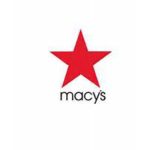 lot of that is due to forgetting to brand themselves in the midst of all the promotion. Macy’s is no exception to that diminishing trend. However, the store continues to maintain important traditions that are memorable part of our Christmas traditions. The Thanksgiving parade, the wonderful Herald Square store windows, and the Believe campaign continue to separate the stores from all the other retailers. Take a look at this video that captures the unveiling of the store window on a snowy night on Broadway. Click on the link below.
lot of that is due to forgetting to brand themselves in the midst of all the promotion. Macy’s is no exception to that diminishing trend. However, the store continues to maintain important traditions that are memorable part of our Christmas traditions. The Thanksgiving parade, the wonderful Herald Square store windows, and the Believe campaign continue to separate the stores from all the other retailers. Take a look at this video that captures the unveiling of the store window on a snowy night on Broadway. Click on the link below.
https://youtu.be/2vsnrWVc1ro (MACY’S WINDOWS NYC)
Now take a look and listen as Macy’s partners with Delta Airlines to present a musical tree at its parade this year. Click on the link below:
https://youtu.be/o7rMn3pcslY (MACY’S SINGING TREE WITH DELTA AIR)
Frangrance gifts are a big part of all retail holiday sales, Macy’s adds some branding its relationship in the following spot. Click on the link below:
https://youtu.be/250jwnkdz-Q (MACY’S WONDERS OF GIVING SIG. SCENT)
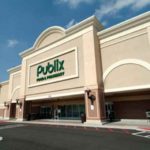 Publix has long been my favorite for branding and setting the standard for holiday creativity in advertising. This year is no different. Yes, you can get Turkeys for 99 cents a pound, but you can welcome home your son to a dinner that makes the food special to every family. Click on the link below for this great spot?
Publix has long been my favorite for branding and setting the standard for holiday creativity in advertising. This year is no different. Yes, you can get Turkeys for 99 cents a pound, but you can welcome home your son to a dinner that makes the food special to every family. Click on the link below for this great spot?
Finally, Apple has taken the spot for technology on Christmas lists for many years now, and they’ll be on the top again this year. But in 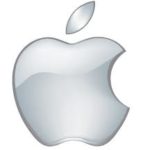 this video “spot” Apple creates a new animated special that highlights the importance of Christmas wishes that need to be shared. I didn’t quite grasp the message in the commercial but this is worth the 3 minutes to tell the whole story of what technology can do to help a young girl share here holiday wishes. Click on the link below:
this video “spot” Apple creates a new animated special that highlights the importance of Christmas wishes that need to be shared. I didn’t quite grasp the message in the commercial but this is worth the 3 minutes to tell the whole story of what technology can do to help a young girl share here holiday wishes. Click on the link below:
I hope you’ll take the time to view these holiday wishes and hope you have a Merry Christmas this year!!

PIZZA PIZZA…BRANDING BRANDING!
PRESS PLAY>>TO VIEW THIS MONTH’S WELCOME VIDEO
 While in my home town, Detroit, for a high school reunion a couple weeks ago, I took a trip down to my undergrad alma mater, Wayne State University, to visit the new Mike Ilitch School of Business Building which was dedicated about a month ago. I was impressed by the building and by its location which was about a mile from campus and right next to the new Little Caesar’s Arena, home of the Detroit Red Wings (which Ilitch owned) as well as the Pistons NBA team. I was impressed by the new arena as well as nearby Comerica Park (home of the Tigers, which is also owned by the late Ilitch’s family). My first impression was “Wow, that’s a lot of pizzas to build these mammoth, modern facilities! Indeed, it is and it’s particularly amazing given the competitiveness of the pizza industry in the US.
While in my home town, Detroit, for a high school reunion a couple weeks ago, I took a trip down to my undergrad alma mater, Wayne State University, to visit the new Mike Ilitch School of Business Building which was dedicated about a month ago. I was impressed by the building and by its location which was about a mile from campus and right next to the new Little Caesar’s Arena, home of the Detroit Red Wings (which Ilitch owned) as well as the Pistons NBA team. I was impressed by the new arena as well as nearby Comerica Park (home of the Tigers, which is also owned by the late Ilitch’s family). My first impression was “Wow, that’s a lot of pizzas to build these mammoth, modern facilities! Indeed, it is and it’s particularly amazing given the competitiveness of the pizza industry in the US.
- Little Caesar’s is one of the top national chains, competing with Pizza Hut, Domino’s, Papa John’s, Jets, California Pizza Kitchen
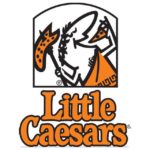 and local Detroit favorite Buddy’s for a share of the pizza market. Little Caesar’s established itself years ago by marketing the fact that not only are its pizzas really delicious but that you get two pizza pizzas every time you order one at the same prices Don’t forget the take and bake stores as well which includes Papa Murphy, Straw Hat, and the Sam’s and Costco Warehouse stores). Of course, we all have our favorite local independent pizza places which help make up the over 62 million pizzerias who spread mozzarella and pepperoni in every corner of the US (and the world for that matter). So, what make one pizza shop succeed in such a competitive market place? Sure, there are the multitude of coupons that flood our newspapers, mailboxes and on-line every day. And there are the thousands of delivery cars and vans that deliver hot pies to our front doors (and don’t forget Uber and Lyft as well). However, I believe it’s branding that continues the growth of this popular staple to our diet.
and local Detroit favorite Buddy’s for a share of the pizza market. Little Caesar’s established itself years ago by marketing the fact that not only are its pizzas really delicious but that you get two pizza pizzas every time you order one at the same prices Don’t forget the take and bake stores as well which includes Papa Murphy, Straw Hat, and the Sam’s and Costco Warehouse stores). Of course, we all have our favorite local independent pizza places which help make up the over 62 million pizzerias who spread mozzarella and pepperoni in every corner of the US (and the world for that matter). So, what make one pizza shop succeed in such a competitive market place? Sure, there are the multitude of coupons that flood our newspapers, mailboxes and on-line every day. And there are the thousands of delivery cars and vans that deliver hot pies to our front doors (and don’t forget Uber and Lyft as well). However, I believe it’s branding that continues the growth of this popular staple to our diet. 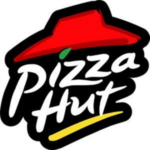 I recall my first pizza job when I was in grad school at Pizza Hut which was a regional player at the time. The key to Pizza Hut’s brand was its special sauce which was confidentially delivered to each hut weekly. We made all the rest of the pie like any other but when we added the herbs and spices to the sauce, the brand took on its uniqueness. Since then, Pizza Hut strengthened its brand with innovative offerings like personal pans, stuffed crust, pan pizzas and unique toppings and amenities.
I recall my first pizza job when I was in grad school at Pizza Hut which was a regional player at the time. The key to Pizza Hut’s brand was its special sauce which was confidentially delivered to each hut weekly. We made all the rest of the pie like any other but when we added the herbs and spices to the sauce, the brand took on its uniqueness. Since then, Pizza Hut strengthened its brand with innovative offerings like personal pans, stuffed crust, pan pizzas and unique toppings and amenities.- Domino’s built it brand on delivery—hot and fresh—within 30 minutes- and has developed systems to
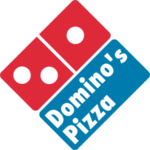 insure it still gets there hot whether you order delivery or pick up at their state-of-art system stores.
insure it still gets there hot whether you order delivery or pick up at their state-of-art system stores. 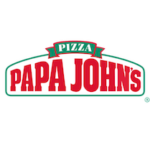 Papa John’s went even further with its “Better ingredients, better pizza” by building on its owner as an icon (although that’s been tarnished lately).
Papa John’s went even further with its “Better ingredients, better pizza” by building on its owner as an icon (although that’s been tarnished lately).- California Pizza Kitchen built on the trend of gourmet and artisan pizzas in mall-based locations and full service restaurants as well as packaging their pizzas to be sold in food stores and chains nationwide
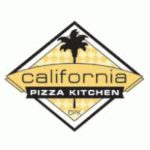
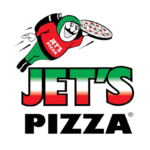 Jet’s built on its Detroit roots by offer a square pan with a crispy crust just like Motown Buddy’s (which was included in my reunionvisit as well).
Jet’s built on its Detroit roots by offer a square pan with a crispy crust just like Motown Buddy’s (which was included in my reunionvisit as well).
And, I could go on about why 94% of Americans eat pizza regularly at one place or another for a total 5 Billion pies annually. But, let’s just consider that it’s one industry that can attribute its success to BRANDING and watching all of the commercials and ads, there’s no question that marketing is as an important ingredient as the cheese, sauce, crust, and toppings. And it just can’t be me-too messages. Since I am paying homage to Mike Ilitch and Little Caesars, my favorite pizza commercial of all time was run in the Super Bowl (by the way the Sunday when more pizzas are consumed than any other day of the week) several years ago when the company announced its delivery system. They didn’t just announce they too will deliver, but they made a convincing message about how well they trained their delivery person’s.
Take a look by clicking on this Super Sunday spot link:
Not only did this make the case for delivery but also helped brand the quality of the service and pizza cooks as well. A strong message to compete with the mom and pop pizza shop around the corner.
And it takes a lot of branding in the independent pizzerias too. Their brand is built by the family, the chef (like in the new Coke commercials about pizza), and the servers who usually have been there as long as the ovens that bake the pizza.
When I worked in the Glendale, AZ, Pizza Hut decades ago, I was worried that I would lose my love of pizza when I made and served hundreds each week. However, when I walked in and smelled the oregano in the sauce and crusts baking, the craving was only enhanced. I’m sure many pizza lovers who still eat in or pick up have that same sensory delight, but the it’s the branding that gets us to come in time after time for the pies we crave.
SHARE OF PIZZA CHAIN MARKETSL $25 BILLION+ ANNUALLY):
Pizza Hut 15%
Domino’s 10%
Little Caesars 8%
Papa John’s 6.5%
CRUISING–BRANDING THE WAY WE TRAVEL!
PRESS PLAY>>TO VIEW THIS MONTH’S WELCOME VIDEO
CRUISING—BRANDING THE WAY WE TRAVEL!
As I stood recently and gazed at the life-sized model of Noah’s Ark in (of all places) Williamston, Kentucky recently, I was amazed at the 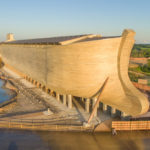 sheer size of the boat that took all those animals two-by-two according to the Book of Genesis. It’s the same awe that I have experienced as I gazed at cruise ships at the Port of Tampa, San Diego, Miami, and Sitka, Alaska over the years. I just can’t imagine how those mammoth ships with 3000-5000 passengers and crew and all that food manage to stay afloat and weather the storms of the sea day after day. More significantly, I’m still amazed at how the cruise industry—and the brands that make up the fleets—continue to grow every year despite the intense competition from planes, trains and automobiles.
sheer size of the boat that took all those animals two-by-two according to the Book of Genesis. It’s the same awe that I have experienced as I gazed at cruise ships at the Port of Tampa, San Diego, Miami, and Sitka, Alaska over the years. I just can’t imagine how those mammoth ships with 3000-5000 passengers and crew and all that food manage to stay afloat and weather the storms of the sea day after day. More significantly, I’m still amazed at how the cruise industry—and the brands that make up the fleets—continue to grow every year despite the intense competition from planes, trains and automobiles.
According to Cruise Market Watch, cruise ships carried over 25 million passengers worldwide in 2017 (over 14 million in the U.S. alone) and will continue to grow at a rate of almost 7% to nearly 28 Million passengers by 2020. This year the cruise lines will add another 13 ships (all bigger and with more amenities than ever) this year. And the potential is enormous when you consider that the total number of cruisers is still only half of the visitors to Las Vegas.
 Now, I’ve never been a big fan of ocean cruisers, having only taken two in my life (although the Disney Cruise could make me change my mind). I have taken four European river cruises in the past few years and really have enjoyed that experience immensely and expect we’ll be on a few more in the future. I like the idea of being with only 100-125 other passengers, never being more than 100 yards from shore, having excellent dinners in a first class restaurant, and being able to go ashore to see great cities easily and comfortably.
Now, I’ve never been a big fan of ocean cruisers, having only taken two in my life (although the Disney Cruise could make me change my mind). I have taken four European river cruises in the past few years and really have enjoyed that experience immensely and expect we’ll be on a few more in the future. I like the idea of being with only 100-125 other passengers, never being more than 100 yards from shore, having excellent dinners in a first class restaurant, and being able to go ashore to see great cities easily and comfortably.
Still, I wonder why cruising is so popular when it is so easy to fly (ok air travel isn’t what it used to be) and get to your destination quickly and efficiently. Airports are more convenient than ever. Airlines (like Allegiant) are giving nonstop service to many secondary markets. Airfares still have some bargains and good reward programs. And schedules continue to grow so you usually can go when you want to where you want all year. I believe the growth comes from the major lines like Princess, Carnival, Norwegian, Holland America etc, appealing to more travelers branding themselves as a more relaxing, less hassle, more exciting way to travel. Princess Cruise lines a few years ago ran an award winning commercial that hit the airline travel problems right on the head. Take a look at it by clicking on this link:
https://youtu.be/-cjPhdZBey8?list=PLdjNdhdEOrak-EoFvJxdpzNSpTWF4hoKU&t=2
There’s no doubt that air travel has its downfalls and this spot uses hyperbole to accentuate all of them and how cruising is a relaxing alternative. I mentioned Disney who continues to expand its destinations for its cruise ship division. Disney has managed to take the benefits of its theme park and media brands and execute them on their ships with personal service on board as well as in setting up the trip. They consistently prove that these cruises aren’t just for kids either by providing adult areas and activities that make us grandparents happy to pay for the entire family as a great excursion for every member. Princess for years has developed loyalty by not only providing a great cruise experience but also by providing their own travel company excursions at every port to make it easy and a one-stop process. Carnival continues to appeal to younger travelers with many kids activities on board and at the ports. And I could go on. Cruise ports are more travel passenger friendly as well. They have figured out how to brand themselves and build their business with loyalty perks that bring back cruisers time and time again. (we have friends who have cruised over 20-25 times).
It’s another case of understanding your customers and competitions, then developing a brand strategy that provides value and a relationship that builds market share. I’m not sure Noah’s brand was targeted at a better alternative to a flood or seeing animals in nature or a zoo, but provide what people need and want and then marketing creatively and consistently build a growth industry.
BRANDING REFLECTS THE MARKET STATUS!
PRESS PLAY>>TO VIEW THIS MONTH’S WELCOME VIDEO
BRANDING REFLECTS THE MARKET STATUS!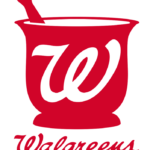
During my 15 years as head of marketing for Eckerd Drugs, we constantly monitored what our competition was doing to gain market share. Not just other drug stores, but discount stores, food chains, and direct mail
sources needed to be watched to be sure we could keep our market share growing and our top-of-mind awareness at its peak. Of course, there is always one direct competitor a store watches more closely than others and for us, it was Walgreens. While they were in more states and markets than Eckerd, and (at that time) we had the top share in almost all markets, they were the most like us and often were right across the street vying for the same customers.
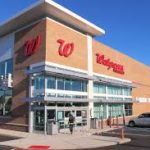 During the ‘80’s, I never was that concerned that Walgreen’s would beat us in advertising. While they were aggressive with weekly promotions and multi-media budgets, their ads were pretty mundane and repetitive, and they never scored highly in the ad research that we conducted. However, where they excelled was in their expenditure to develop the digital systems that would provide them with more timely sales and inventory data than we could only hope to imagine. This insured that they would have the right items in the right stores in the right quantities. As we learned in our own strategic research, this would be a dramatic competitive advantage as they matched Eckerd store for store and their market share reflected it was working. As Walgreen’s grew and Eckerd dissolved, this capability also enabled them to communicate more effectively and more directly with their customers on an ongoing basis and that has paid great dividends in building loyalty and increased sales per store and per customer.
During the ‘80’s, I never was that concerned that Walgreen’s would beat us in advertising. While they were aggressive with weekly promotions and multi-media budgets, their ads were pretty mundane and repetitive, and they never scored highly in the ad research that we conducted. However, where they excelled was in their expenditure to develop the digital systems that would provide them with more timely sales and inventory data than we could only hope to imagine. This insured that they would have the right items in the right stores in the right quantities. As we learned in our own strategic research, this would be a dramatic competitive advantage as they matched Eckerd store for store and their market share reflected it was working. As Walgreen’s grew and Eckerd dissolved, this capability also enabled them to communicate more effectively and more directly with their customers on an ongoing basis and that has paid great dividends in building loyalty and increased sales per store and per customer.
Add to this technology an aggressive growth plan with new stores and acquisitions, and it’s not surprising that Walgreen’s is a major factor in the total US economy. So much so, that las week the company replaced General Electric as one of the benchmark Dow Jones
 Industrials companies. However, it is more than just significant revenue growth. Walgreen’s has built its brand on an understanding of what has happened to the US economy and to the country’s consumer buying habits.We are becoming a service-oriented country and with the increased demand for health care products, it has served as a perfect storm for Walgreen’s to grow its market share despite even more competition than ever before.
Industrials companies. However, it is more than just significant revenue growth. Walgreen’s has built its brand on an understanding of what has happened to the US economy and to the country’s consumer buying habits.We are becoming a service-oriented country and with the increased demand for health care products, it has served as a perfect storm for Walgreen’s to grow its market share despite even more competition than ever before.
General Electric is no slouch, but the company that Jack Welch built, I believe has been more focused on organizational systems and structure than it has on understanding where the customer growth is really coming from. Yes, they are still a factor in consumer appliances and related products, but their major focus on everything from jet engines to media networks to railroad locomotives has made it less representative of what is impacting our economy and the American consumer.
It’s critical to anticipate customer trends well in advance—as Walgreen’s did in the early ‘80s by committing to technology—in order to be ready to respond not only in marketing but in having the infrastructure and logistics to be able to meet the changing needs. Only then, can a company improve and build its relationships with its customers and remain relevant with it marketing messages and its offerings. The successful companies today (and tomorrow) are the ones who realize that their brand is not just a marketing slogan or new name, but rather it is the relationship with a customer who sees value in doing business with them now and in the future.
BREAKING UP A GREAT BRAND! R
PRESS PLAY>>TO VIEW THIS MONTH’S WELCOME VIDEO
BREAKING UP A GREAT BRAND!

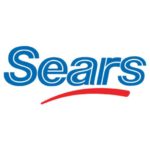 It was reported this week that Eddie Lampert, CEO of Sears Holdings, was pushing to
It was reported this week that Eddie Lampert, CEO of Sears Holdings, was pushing to 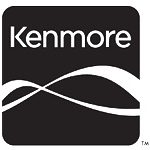 have his separate company purchase the Kenmore and Sear Home Improvement brands/businesses from his troubled retail operation. This is yet another step in the demise of what was once one of the premier brands in American business and certainly one of the legendary brands in the retail industry. The beat continues to go on. Sears and its other struggling retailer have been on a slippery slope ever since Lampert bought the companies several years ago. The only news from the stores has been how many are closing in our markets on a regular basis. It’s long been known that the only value the company has are its real estate holdings. Customers have long forgotten them as a viable option for their shopping dollars and certainly as a place to shop (period).
have his separate company purchase the Kenmore and Sear Home Improvement brands/businesses from his troubled retail operation. This is yet another step in the demise of what was once one of the premier brands in American business and certainly one of the legendary brands in the retail industry. The beat continues to go on. Sears and its other struggling retailer have been on a slippery slope ever since Lampert bought the companies several years ago. The only news from the stores has been how many are closing in our markets on a regular basis. It’s long been known that the only value the company has are its real estate holdings. Customers have long forgotten them as a viable option for their shopping dollars and certainly as a place to shop (period).
 What is really sad is that the company, in addition to having two of the strongest retail brands for decades and
What is really sad is that the company, in addition to having two of the strongest retail brands for decades and  millions of loyal customers, also had some of the strongest product brands in the country. Kenmore set the standard for home appliances and when I was at Circuit City a couple decades ago, it was the number one choice for homeowners in appliances and also at the top of mind awareness for most appliance categories. The quality of the brand still is one of the best according to Consumer Reports (thanks to Whirlpool’s manufacturing expertise) and it has expanded distribution beyond its parent company’s stores. However, the lack of branding has certainly taken its toll in the past few years.
millions of loyal customers, also had some of the strongest product brands in the country. Kenmore set the standard for home appliances and when I was at Circuit City a couple decades ago, it was the number one choice for homeowners in appliances and also at the top of mind awareness for most appliance categories. The quality of the brand still is one of the best according to Consumer Reports (thanks to Whirlpool’s manufacturing expertise) and it has expanded distribution beyond its parent company’s stores. However, the lack of branding has certainly taken its toll in the past few years.
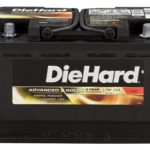 Sears was once the place for the things you need for home improvement projects and for the service before and after installation. That, too, has faded away as Home Depot and Loew’s continue to flourish and be the first choice in product and reliability. The company has already sold of its Craftsman Tool Brand (to Stanley/Black & Decker) and it continues to have a strong brand loyalty but was so tarnished by Sears that the private label brands on the big two DIY stores (and Harbor Freight) that the demand has diminished. DieHard batteries became the replacement of choice for auto batteries and flourished when Sears automotive service was a preferred choice. Bad decisions and dishonest practices killed the business and hurt one of the top brands in the industry. I could go on, but suffice it to say that putting a financial person at the top of most retailers is (as the late guru Peter Glen used to say) the first step to failure, while putting a marketer at the helm can bring success.
Sears was once the place for the things you need for home improvement projects and for the service before and after installation. That, too, has faded away as Home Depot and Loew’s continue to flourish and be the first choice in product and reliability. The company has already sold of its Craftsman Tool Brand (to Stanley/Black & Decker) and it continues to have a strong brand loyalty but was so tarnished by Sears that the private label brands on the big two DIY stores (and Harbor Freight) that the demand has diminished. DieHard batteries became the replacement of choice for auto batteries and flourished when Sears automotive service was a preferred choice. Bad decisions and dishonest practices killed the business and hurt one of the top brands in the industry. I could go on, but suffice it to say that putting a financial person at the top of most retailers is (as the late guru Peter Glen used to say) the first step to failure, while putting a marketer at the helm can bring success.
Sam Walton’s successor, David Glass, used to say that a good retail leader must have a passion for the business and that passion is usually reflected in a strong brand strategy. Sears (and Kmart) will soon disappear from the retail market place and it will be up to those who buy the brands that they created to disregard everything that the stores have done in the past few years to destroy them. There is still hope if the new brands go back to the customer and build a relationship and loyalty that once existed.
A BRAND THAT NEVER GREW UP!

TOYS R US FOUNDER CHARLES LAZARUS
Last week one of the retail hall of fame entrepreneurs passed away. Charles Lazarus, who founded and built Toys R Us into one of the retail box store powerhouses died (maybe of heartbreak) just a day after the company announced that it was closing and liquidating all of its retail stores. Most retail analysts attributed it to the growth of Walmart, Amazon and the warehouse stores. To be sure, this increased competition certainly played a factor in the company’s demise.
However, I believe that, like so many of the other retail disappearing acts of the past several years, it was 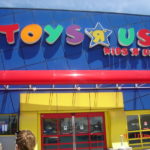 really a case of having, updating, and maintaining an effective brand strategy that led to the lack of interest by so many customers over the past couple decades. Most big box category-killers (like Toys, Circuit City, Office Depot etc.) opened up to the “wows” of customers who had never seen so much of one category in one place. Unfortunately, as successful brands know, you have to consistently strive to improve and react to the customers in order to maintain their relevance. Price alone only gets you on the playing field. Selection improves on getting trial. But becoming and maintaining a brand that people love, that’s what builds an enduring brand.
really a case of having, updating, and maintaining an effective brand strategy that led to the lack of interest by so many customers over the past couple decades. Most big box category-killers (like Toys, Circuit City, Office Depot etc.) opened up to the “wows” of customers who had never seen so much of one category in one place. Unfortunately, as successful brands know, you have to consistently strive to improve and react to the customers in order to maintain their relevance. Price alone only gets you on the playing field. Selection improves on getting trial. But becoming and maintaining a brand that people love, that’s what builds an enduring brand.
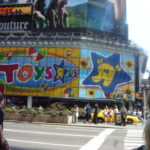 Toys R Us had lots of toys, for sure. But their price image never seemed to keep up with their inventories. Nor did the customer service. Nor did the operational excellence as the stores became worn down and tired. There are always new innovations in the toy market and yes, TRU always had the latest trends. However, they never seemed to create an excitement that was present in the department stores during the holidays in their hay day. The company built a destination store near Times Square in New York that rivaled the excitement of FAO Schwarz around the world, but never was able to translate that excitement in its hundreds of branches in the suburbs of American cities. It’s marketing never went beyond it’s original “I don’t want to grow up. I want to be a ToysRUs kid” campaign. Despite efforts to revive the theme over the years. There was no enticement for parents and grandparents to come back and not much youthful excitement of the kids to convince them to go back as well.
Toys R Us had lots of toys, for sure. But their price image never seemed to keep up with their inventories. Nor did the customer service. Nor did the operational excellence as the stores became worn down and tired. There are always new innovations in the toy market and yes, TRU always had the latest trends. However, they never seemed to create an excitement that was present in the department stores during the holidays in their hay day. The company built a destination store near Times Square in New York that rivaled the excitement of FAO Schwarz around the world, but never was able to translate that excitement in its hundreds of branches in the suburbs of American cities. It’s marketing never went beyond it’s original “I don’t want to grow up. I want to be a ToysRUs kid” campaign. Despite efforts to revive the theme over the years. There was no enticement for parents and grandparents to come back and not much youthful excitement of the kids to convince them to go back as well.

GEOFFREY THE GIRAFFE THE BRAND’S SYMBOL
My long-time retail marketing peer and good friend, Ernie Speranza, former TRU CMO, agrees and he also indicated that the decision to establish Babies R Us as a separate chain was also a mistake. The opportunity to get parents coming in to Toys R Us locations when the kids were born and create a shopping habit as well as an awareness of toy trends and news was missed as Babies R Us did well but failed to translate as the kids grew up. The company had the opportunity to be the destination for disposable diapers and the sales volume that meant. Instead Walmart , other discounters, and grocery and warehouse stores built loyalty with their inventories and prices. Of course, there is also the expense savings that having one store doing more sales with less capital and labor that would have enabled Toys R Us to spend more on effective branding and marketing to maintain a higher market share.
So, as I visited my local Toys R Us last week, I noticed the full parking lots and streams of customers who hadn’t been in the stores for quite a while. They were there to take advantage of the 60% Off going out of business sale and one last visit to a retailer that failed to grow up with them.
Click on the link to view one of the classic Toys R Us commercial and sing along!

